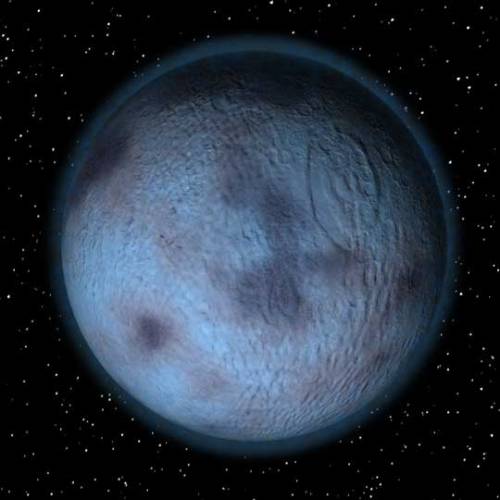- Retrograde orbit: the satellite (red) orbits in the direction opposite to the rotation of its primary (blue/black) Retrograde motion in astronomy is, in general, orbital or rotational motion of an object in the direction opposite the rotation of its primary, that is, the central object (right figure).
- Of the orbit in the inertial coordinate system. In both plots the direction of orbit is retrograde although Figure 1a has periodic spirals that oscillates between the retrograde and the prograde (or direct) directions. In the inertial frame, the general motion of a DRO is retrograde.
- 2) More power is required to launch into a retrograde orbit because you have to go against the Earth's rotation. When launching into a prograde orbit, the Earth's rotation gives you a little benefit, so you can use a little less propellant getting to orbit.
If you’re looking to learn more about the way satellites orbit in our solar system, then you’ll need to learn about retrograde orbit and retrograde rotation. It is one of the most intriguing parts of our universe, and astronomers still don’t have a conclusive answer as to why objects rotate in this fashion. But what exactly is retrograde orbit? Well, let’s find out.
Technically, a retrograde orbit is an orbit with an inclination of more than 90°. More usually, an orbit with an inclination a lot over 90 degrees. Almost no satellites are launched into retrograde orbit because the quantity of fuel required to launch them is much greater than for a prograde orbit. This is because when the rocket starts out on the ground, it already has an eastward component of velocity equal to the. An inclination of exactly 180° is a retrograde equatorial orbit. For impact-generated moons of terrestrial planets not too far from their star, with a large planet–moon distance, the orbital planes of moons tend to be aligned with the planet's orbit around the star due to tides from the star, but if the planet–moon distance is small, it.
What is a Retrograde Orbit?
Retrograde orbit is quite simply, an object that is in orbit of another, larger object. Instead of orbiting this larger object in the same way that it is rotating, it moves the opposite way that the larger object in rotating– we call this a retrograde orbit.
What satellites orbit in a retrograde fashion?
In our universe, there are different objects which are known to be in retrograde orbit. None of our 8 planets orbit the Sun in a retrograde fashion, and they all follow the same counter clockwise pattern.
Triton
Triton is the only large moon to be in retrograde orbit. It is the largest satellite of the planet Neptune, and it is the 7th largest moon overall, with a radius of 1340km. Astronomers believe that Triton may have been a dwarf planet, which was caught in the gravitational pull of Neptune.
Phoebe
Phoebe is another moon which orbits it’s planet, Saturn, in a retrograde fashion. It is much smaller than Triton, though it is still well known as one of Saturn’s planets. It is well known for it’s strange sponge-like surface and it’s odd shape.
Other moons
As well as these moons, there are more of the moons that are distant from the planet Jupiter that are in retrograde orbit too.
Asteroids
The majority of asteroids in the Asteroid belt rotate around the Sun in a prograde fashion. However, there are several dozen of them that we know orbit in a retrograde manner, so this isn’t limited to just the moons.
Comets
There’s a much higher chance that a comet, which is born out in the Kuiper belt or the Oort cloud, has a retrograde orbit. The best example of this is the well known Halley’s comet, which is in retrograde orbit of the Sun.
What is Retrograde Rotation?
Retrograde rotation and retrograde orbit are often confused with each other. However, they don’t actually mean the same thing.
Retrograde orbit means when a satellite orbits a larger central object in the opposite way it is rotating. However, retrograde rotation generally refers to when the smaller object itself is rotating in the opposite direction to the direction that it is orbiting.
For example, the majority of the planets rotate in the same way that are moving – we call this a prograde rotation. So, they move around the Sun in an anti-clockwise direction and they also rotate in an anti-clockwise direction. However, Venus moves around the Sun in an anti-clockwise direction, but it rotates in a clockwise direction. So, this is what retrograde rotation means.
Another anomaly of the planets in our solar system is Uranus. Like Venus, it rotates in a retrograde fashion – however, it is also tilted onto it’s side too. So, it rotates in a very strange fashion, which causes long periods of darkness for one side of the planet.
Conclusion
Hopefully this has cleared up what retrograde orbit is, and what retrograde rotation is too. Whilst astronomers aren’t sure why some planets rotate in this fashion, it is thought that they made have actually rotated in a normal prograde fashion once upon a time. However, a collision with another object may have caused the planet to spin around into an upside down position, giving it a retrograde rotation!
retrograde orbit
[′re·trə‚grād ′ȯr·bət] (astronomy) Want to thank TFD for its existence? Tell a friend about us, add a link to this page, or visit the webmaster's page for free fun content.
Want to thank TFD for its existence? Tell a friend about us, add a link to this page, or visit the webmaster's page for free fun content. Link to this page:
Retrograde Orbit Definition
Retrograde Orbit Meaning
